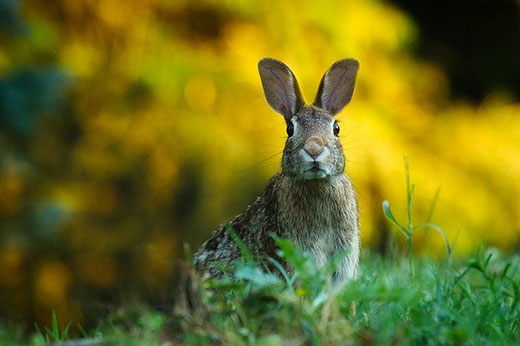
Fencing is a quick and effective control for keeping rabbits out of a home garden.
Wascally Wabbits? Tips for keeping bunnies out of the garden
Fencing is the quickest, most effective control
May 14, 2020
MANHATTAN, Kan. – It’s that time of year for home gardeners.
Kansas State University horticulture specialist Ward Upham says rabbits are a perennial problem in most home gardens because of the wide variety of plants they can feed on. And because vegetables and flowers are in an early stage, they’re especially appealing to the furry little critters.
“Fencing can provide a quick and effective control method,” Upham said. “The fence does not need to be tall; two feet is sufficient to keep cottontails out.”
Upham said gardeners should construct a fence with fine mesh (one inch or less) so that young rabbits can’t squeeze through it. Select posts that will give the fence adequate support, he added. Gardeners, however, often avoid fencing because it affects the attractiveness of the garden.
There are other means of control – repellants, traps and shooting among them – though Upham provided a couple additional ideas that may be more desirable.
“Another type of barrier is a floating row cover,” Upham said, referring to a light piece of garden fabric used to shelter crops. “Though most often used to promote early growth by keeping plants warmer than normal, it can also help protect young plants from insects and wildlife.”
He also suggested a motion-activated sprinkler. “These can be attached to a garden hose,” Upham said. “When motion is detected, it will release a short burst of water,” providing protection for up to 1,000 feet.
Upham noted that rabbits rarely bother such crops as potatoes, tomatoes, corn, squash, cucumbers and some peppers. Gardeners’ control efforts should focus on other, more susceptible crops.
Upham and his colleagues in K-State’s Department of Horticulture and Natural Resources produce a weekly Horticulture Newsletter with tips for keeping yards healthy and beautiful year-round. The newsletter is available to view online or can be delivered by email each week.
Interested persons can also send their yard-related questions to Upham at wupham@ksu.edu.

